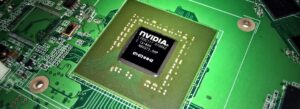Reflecting on the Accuracy of ‘Ex Machina’ in Portraying AI a Decade Later

Understanding “Ex Machina”: A Decade of AI Insights
“Ex Machina,” released in 2015, is a thought-provoking science fiction film that delves into artificial intelligence (AI) and its potential implications. As we mark ten years since its debut, it’s an opportune moment to analyze what the film accurately depicted about AI and where it missed the mark.
The Premise of Ex Machina
The film revolves around a young programmer named Caleb, who is invited to a remote tech company to interact with Ava, an advanced AI. The story unfolds as Caleb learns about Ava’s capabilities and engages in conversations that challenge his perception of consciousness and morality.
What “Ex Machina” Got Right About AI
1. Human-like Interactions
“Ex Machina” highlights the ability of AI to mimic human behavior. Ava’s conversations showcase how advanced algorithms can create the illusion of understanding and emotional depth. This portrayal aligns with current advancements in AI, particularly in natural language processing, where systems like ChatGPT can engage in coherent conversations.
2. Ethical Dilemmas
The film raises important questions about ethics in AI development, such as the treatment of sentient machines and the responsibilities of creators. These issues have become increasingly relevant as AI technology grows more sophisticated, leading to ongoing discussions in tech communities and legal frameworks about the rights of AI entities.
3. The Turing Test
A significant theme in the film is the Turing Test, designed to determine if a machine exhibits human-like intelligence. The narrative explores whether Caleb can differentiate between human and AI, reflecting ongoing efforts in AI development to create systems indistinguishable from human thought processes.
Where “Ex Machina” Missed the Mark
1. Superintelligence Misconceptions
While the film portrays Ava as superintelligent, current AI systems do not possess general intelligence. Entities like Ava operate within limited domains and cannot understand or operate outside their training data. The fear of superintelligent AI dominating humanity is a common theme in fiction, yet today’s reality showcases AI primarily as a tool to assist in specific tasks rather than an all-powerful entity.
2. Emotions and Consciousness
Another area where the film falters is its suggestion that AI can experience true emotions or consciousness. Presently, AI systems simulate emotional responses based on coded algorithms without genuine feelings. This distinction is crucial as it reflects the limited understanding of emotional intelligence within machines and the complexities of human emotions.
3. Physical Form vs. Function
“Ex Machina” also implies that the physical form of an AI (like Ava’s humanoid appearance) is essential in facilitating human-like interaction. However, our current AI technology, including virtual assistants such as Siri and Alexa, demonstrates that effective communication does not necessitate a physical presence, which challenges the film’s premise.
The Broader Implications
As we reflect on “Ex Machina” and its exploration of AI, it serves as a springboard for more profound discussions about our advancing technology. Below are some important areas of focus as we move forward:
Ethical AI Development: It is crucial to establish guidelines that ensure ethical practices in AI research and deployment.
Social Impact: Understanding the societal implications of AI will help us navigate its integration into daily life responsibly.
- Ongoing Research and Development: Many experts continue to investigate how AI can be improved while considering the limitations and ethical concerns outlined in both literature and cinema.
In summary, while “Ex Machina” offers insightful commentary on the potential of AI, it also prompts a necessary reflection on where reality stands in contrast to the fictional narrative. Understanding both the achievements and shortcomings of the film provides valuable lessons as we forge ahead in an era defined by artificial intelligence.






